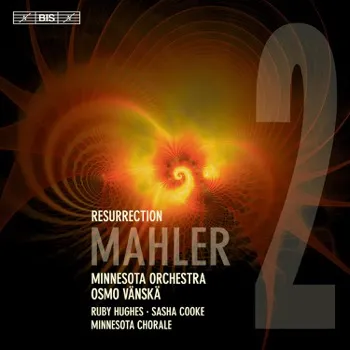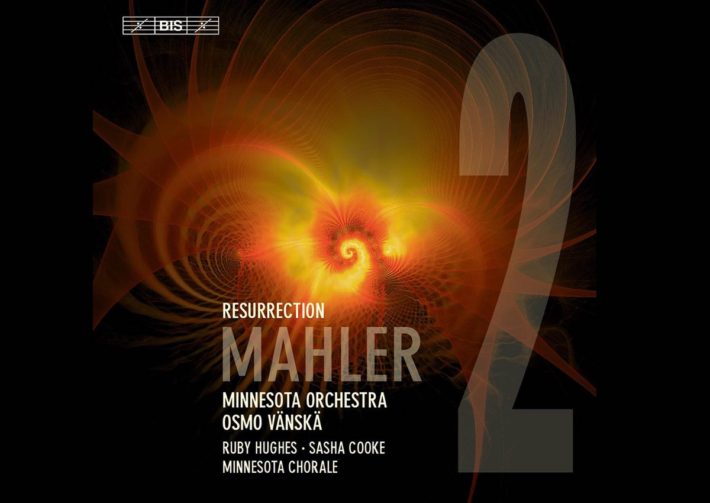This is the third and, to me, the most successful in Osmo Vänskä’s ongoing Mahler cycle with the Minnesota Orchestra. Together with other ongoing Mahler cycles – namely Adam Fischer’s Dusseldorf series and Daniel Harding’s newer cycle with the Swedish Radio Symphony Orchestra – we can sense a trend emerging, of playing direct, no-nonsense Mahler that frees itself from self indulgence, treating the score as “classically” as possible and letting the music speak for itself.

There is plenty of diversity nonetheless. Right from the opening bars, where the cellos and basses are calling out the main theme, you can sense the frightening tension in the air, persistent throughout the difficult first movement (listen to the strings and brass at 06:00). It’s a test for any large orchestra, and the Minnesotas, here and elsewhere in the Symphony, pass it with flying colours.
The Minnesota orchestra was one of the first to record this piece (with Eugene Ormandy in 1935), and their affinity to the music is evident. Listen to the climaxes of the development section of the first movement and see if you can resist it – how the tension forcefully breaks at around 16:00 with no artificial tempo changes, like on Simon Rattle’s otherwise fabulous account with the CBSO. Or the almost static playing before the contrasting, violent bars on 12:15, which demands extreme control from all players.
The second movement is charming without being overly sentimental – Vänskä opts again for the direct approach. Rattle here is almost cynical, while Chailly in his Concertgebouw version more steady, avoiding almost completely from playfulness in the strings. Here, Vänskä allows the section to gleefully play the instructed glissando and sneak-in a smile, as Mahler intended.
You need to be a fine ensemble to play the Scherzo movement well, and here it gets an exemplary account by the Minnesotans. Listen to the intricate exchange of all sections at around 03:20 as an example (with some lovely solo flute playing). It’s a movement of small contrasts, and the group are completely attuned to the subtle changes in colouring, required to make it effective.
Simon Rattle famously had Dame Janet Baker for the Mezzo part in his 1990 account, an unforgettable performance that’s very hard to bit. But Sasha Cooke is coming very well close. Her hushed intensity is chilling in the “Urlicht” movement, very nicely accompanied by the solo violin, strings and brass.
The behemoth finale movement is where opinions may split. It’s a well planned, straight to the matter performance that the orchestra and choir manage splendidly. When the “Minnesota Chorale” and soprano Ruby Hughes gets into the picture, they are treated as angelic, stoic participants. This treatment is persistent almost through the end of the movement, where the culmination is an outburst of universal proportions. Klemperer, Chailly and, again, Rattle had a more multicoloured development leading to the climatic final bars, though Boulez had a similar approach in his Vienna Philharmonic version. Arriving to the end of the movement is much more exciting with the contrast of dynamics found here, and you will have to determine if that was worth the hushed suspense.
Like in the previous two volumes in this series (Symphonies 5 and 6), the recording is of demonstrating quality, but in this case the BIS engineers outdid themselves. This is one of the better recorded Seconds on record, perhaps one of the best recorded Mahler Symphonies, on SACD or the compatible two channels CD. With this recording conveniently fitting on a single CD, it’s highly recommended even as a supplement to other versions, some listed below.
Mahler – Symphony No. 2 (“Resurrection”)
Minnesota Orchestra
Osmo Vänskä – Conductor
Ruby Hughes – Soprano
Sasha Cooke – Mezzo
Minnesota Chorale
BIS Records, Hybrid SACD 2296




















